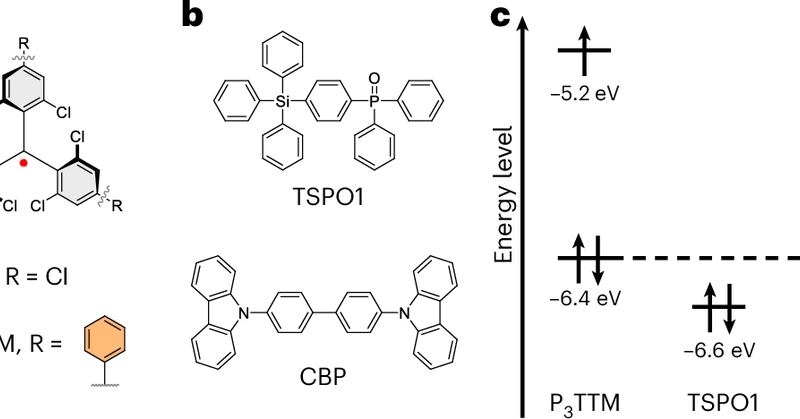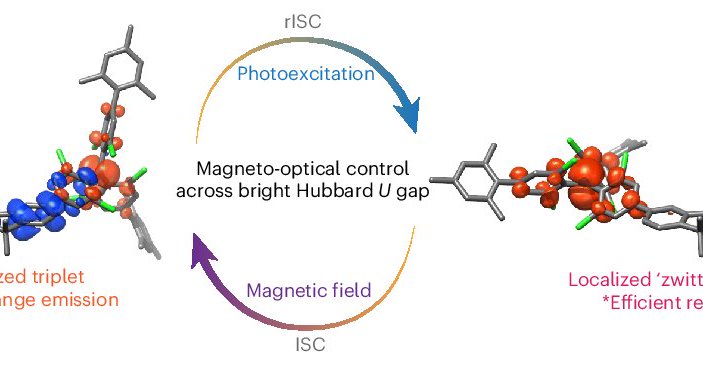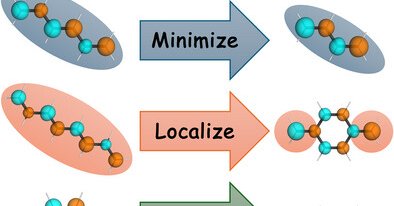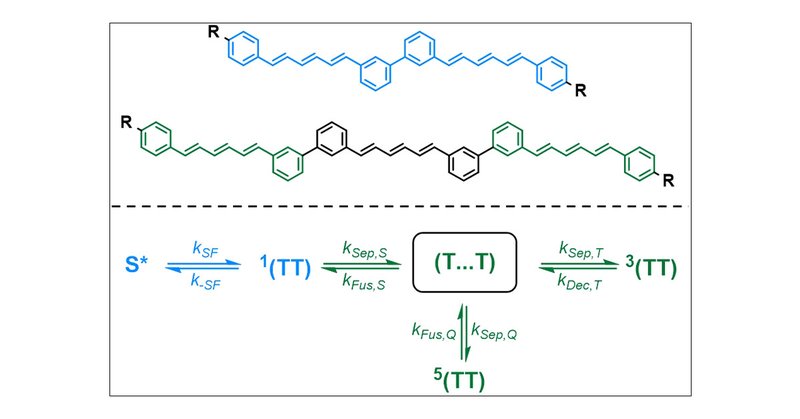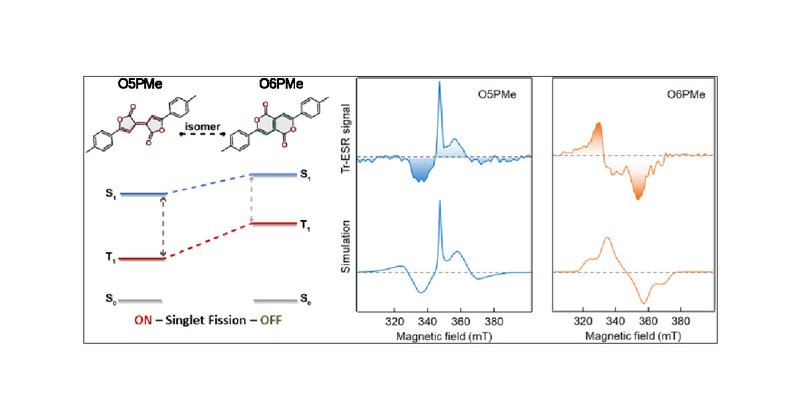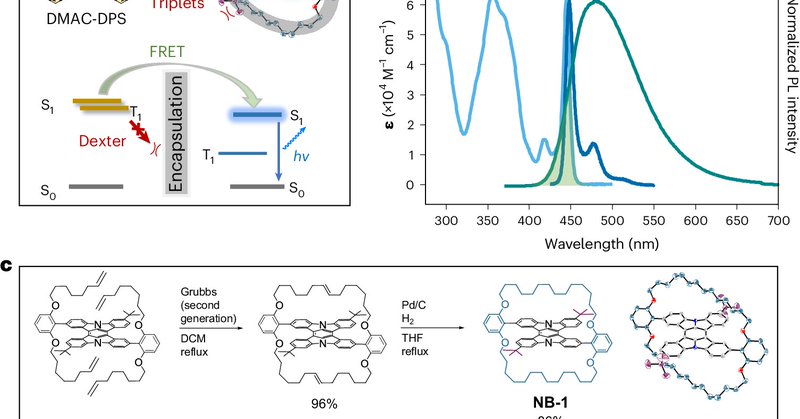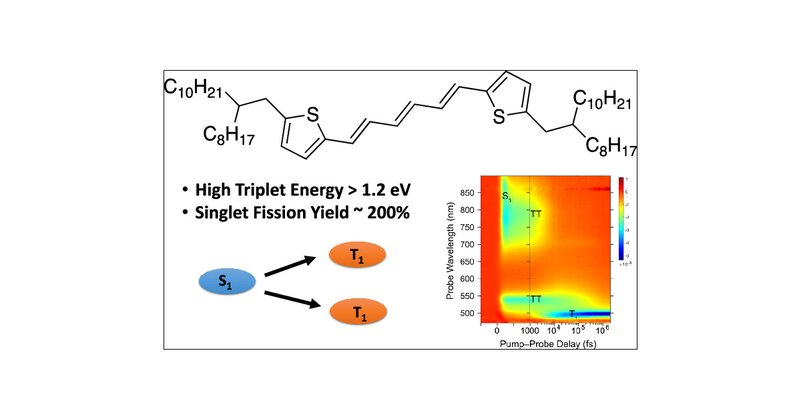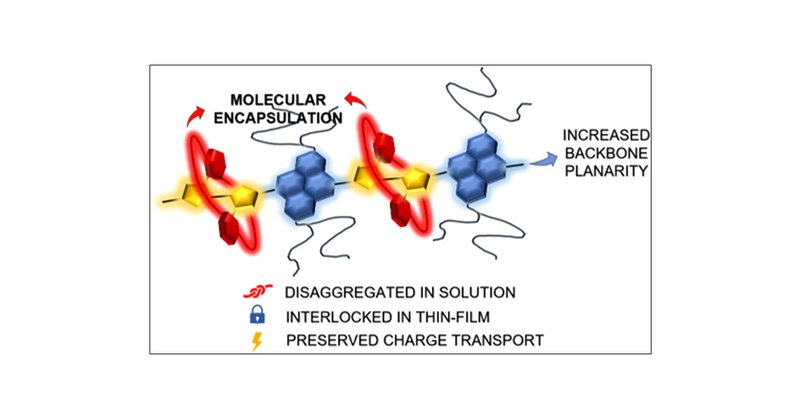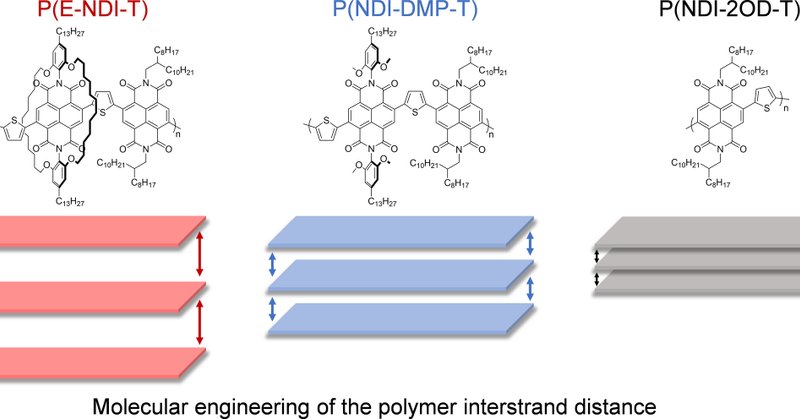
Bronsteingroup
@bronsteingroup
Followers
220
Following
5
Media
0
Statuses
22
Joined June 2018
https://t.co/x2UzD5AfbH It turns out you dont need a heterojunction to generate charges in organic materials. Additionally the generated CT state is spin-paired. I think this is the future of OPV. Thanks @NatureMaterials
nature.com
Nature Materials - Homojunction intermolecular charge separation is reported in photoexcited anion–cation pairs induced by external electric field bias, opening possibilities for light...
0
1
14
Efficient Triplet and Singlet dual fluoresence from a single molecule. I would never have thought this was possible. https://t.co/mmNpn1TQqC
nature.com
Nature Chemistry - Controlling electron spin states with light is vital for quantum technologies but requires electronic excitations with net spin. Now a molecular diradical with two trityl radical...
1
4
19
Understanding and Tuning Singlet–Triplet (S1–T1) Energy Gaps in Planar Organic Chromophores - Zeng - Angewandte Chemie International Edition - Wiley Online Library https://t.co/IrdYoAlSwx Very proud of this paper. Collab with Felix Plasser
onlinelibrary.wiley.com
A new framework for tuning singlet–triplet (S1–T1) gaps based on electrostatic interactions of the transition density is developed. Three widely applicable design rules for maximizing the singlet–t...
1
0
12
TT states! Thanks for publishing @J_A_C_S and collaboration @RaoGroupCAM The Interplay of Strongly and Weakly Exchange-Coupled Triplet Pairs in Intramolecular Singlet Fission | Journal of the American Chemical Society
pubs.acs.org
Singlet fission (SF) and triplet–triplet annihilation upconversion (TTA-UC) nominally enable the interconversion of higher-energy singlet states with two lower-energy triplet states and vice versa,...
1
5
48
Two assistant professor positions available in the department of chemistry, Cambridge. Physical chemistry - https://t.co/YhUedkTtF7 Theoretical chemistry - https://t.co/YhUedkTtF7 Please share it with anyone who might be interested
0
5
14
Thanks @_iainmcculloch. Dont work yourself too hard in San Diego
Fantastic paper from @bronsteingroup precisely controlling the spacial distance between donor and acceptor units on polymers and the effect on charge transfer states. Well worth a read.
0
0
0
New Paper! CT states! https://t.co/ol3y8E0fZ7 Thanks @NatureChemistry for publishing Amazing collaboration with @JNelsonGroup @JarvistFrost @RaoGroupCAM and others.
nature.com
Nature Chemistry - The molecular interactions at an organic heterointerface govern the performance of many optoelectronic devices. Through a combination of synthesis, spectroscopy and modelling, it...
1
13
65
Singlets! - but open-shell. Near-infrared luminescent open-shell π-conjugated systems with a bright lowest-energy zwitterionic singlet excited state | Science Advances
science.org
Open-shell systems exhibit near-infrared absorption and emission via a bright lowest-energy zwitterionic singlet excited state.
0
3
22
Looking for a synthetic postdoc. https://t.co/Q0BVmvZJ58 Please share if you can.
0
3
6
More triplets! Im really proud of this paper. Thanks @J_A_C_S for publishing and @RaoGroupCAM for excellent collaboration Singlet Fission in Pechmann Dyes: Planar Chromophore Design and Understanding | Journal of the American Chemical Society
pubs.acs.org
Singlet fission in organic chromophores holds the potential for enhancing photovoltaic efficiencies beyond the single-junction limit. The most basic requirement of a singlet fission material is that...
0
8
30
exciton-phonon coupling study led by @RaoGroupCAM and @PratyushG_UCam. Thanks for including us!
Thrilled to announce my main PhD research is out in @Nature. We discovered how, by tweaking exciton wavefunctions & vibrational localization, we can decouple exciton-phonon coupling in organic molecules at high frequencies. https://t.co/hQDz8IJ4Qd
12
0
7
Back to doublets again!
Check out this awesome work on luminescent radicals just published in @J_A_C_S, led by @petrimur and @bronsteingroup. Glad to be involved! https://t.co/lBsFgVpMDs
0
0
4
New paper - doublets this time! @NatureComms
https://t.co/tgg7uzeHBF
0
3
23
More triplets! Not from fission this time Generating Long-Lived Triplet Excited States in Narrow Bandgap Conjugated Polymers https://t.co/9h6M8WvprD
@J_A_C_S
pubs.acs.org
Narrow bandgap conjugated polymers are a heavily studied class of organic semiconductors, but their excited states usually have a very short lifetime, limiting their scope for applications. One...
0
9
37
More Fission Soluble Diphenylhexatriene Dimers for Intramolecular Singlet Fission with High Triplet Energy https://t.co/RVFuBddxOt
@J_A_C_S
pubs.acs.org
Intramolecular singlet fission (iSF) facilitates single-molecule exciton multiplication, converting an excited singlet state to a pair of triplet states within a single molecule. A critical parameter...
1
5
42
Really great collaboration with Anirudh and Derya
Molecular encapsulation limits non-radiative losses in #OrganicPhotovoltaics Our 1st paper of 2023 just published @MaterChemFront Great collaboration with @bronsteingroup @KAUST_OMEGALab @KAUST_Solar
@KaustResearch @KAUST_Solar
https://t.co/H8F8rwMmkH
#solar #OPVs #polymers
0
0
3
Quantitative Singlet Fission in Solution-Processable Dithienohexatrienes
pubs.acs.org
Singlet fission (SF) is a promising strategy to overcome thermalization losses and enhance the efficiency of single junction photovoltaics (PVs). The development of this field has been strongly...
2
7
23
Just published: @StePecorario and Jeroen Royakkers explored effects of molecular encapsulation on properties of a well-known electron conducting polymer: no aggregation in solution and intorlocking in films. Nice collaboration with Hugo Bronstein's group. https://t.co/ALuNHdUb0Y
pubs.acs.org
Engineering the molecular structure of conjugated polymers is key to advancing the field of organic electronics. In this work, we synthesized a molecularly encapsulated version of the naphthalene...
0
4
17
Molecular Encapsulation of Naphthalene Diimide (NDI) Based π‐Conjugated Polymers: A Tool for Understanding Photoluminescence
onlinelibrary.wiley.com
This article demonstrates a novel synthetic strategy that can be used to tune the interstrand distance between conjugated polymers with unprecedented precision. This control provides an ideal...
0
0
3
